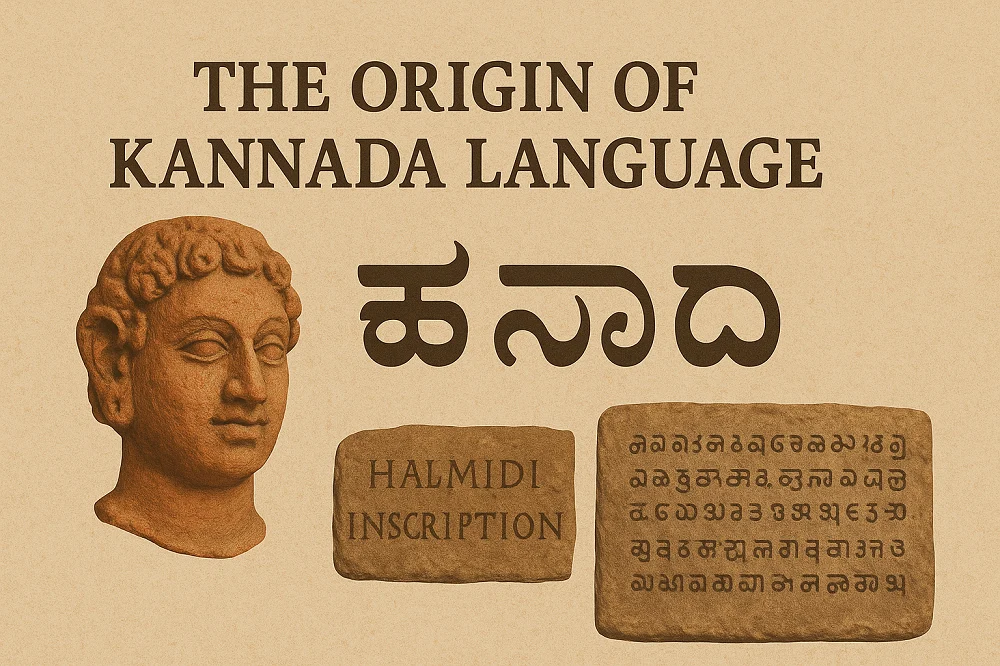
The Kannada language, known for its rich literary heritage and deep cultural roots, is one of the oldest living languages in the world. Spoken predominantly in the Indian state of Karnataka, Kannada boasts a legacy that stretches back over two millennia. But where did it all begin? Let’s explore the fascinating origins and evolution of this Dravidian gem.
Ancient Beginnings
Kannada belongs to the Dravidian language family, which includes Tamil, Telugu, and Malayalam. Among these, Kannada has a unique trajectory. Linguistic and archaeological evidence shows that Kannada was spoken as early as 3rd century BCE, during the time of Emperor Ashoka. Some of the earliest traces of Kannada words appear in his Prakrit inscriptions found in present-day Karnataka.
The Halmidi Inscription – A Milestone
The Halmidi inscription, dated to around 450 CE, is the oldest known inscription written entirely in Kannada. Found in the village of Halmidi (near Hassan district), this stone inscription marks a turning point—it shows that Kannada had evolved into a language suitable for administrative and literary expression. The script used here is a precursor to the modern Kannada script, and its structure indicates a well-developed grammar.
Growth Under Dynasties
Kannada flourished under several powerful dynasties, each contributing to its development:
The Chalukyas (6th–8th centuries CE) promoted Kannada in inscriptions and temple architecture.
The Rashtrakutas (8th–10th centuries CE) encouraged literature. Notably, Adikavi Pampa, one of the earliest poets, wrote the epic Vikramarjuna Vijaya in Kannada.
The Hoysalas and Vijayanagara Empire took it further, making Kannada a language of art, poetry, and administration.
By the 10th century, Kannada literature was thriving with diverse genres—poetry, prose, and religious works.
Kannada Script Evolution
The Kannada script evolved from the Kadamba script, which itself was influenced by the ancient Brahmi script. Over centuries, the rounded, elegant script we know today took shape. This script is closely related to the Telugu script, though it has distinct features.
Modern Kannada and Its Legacy
In modern times, Kannada has continued to flourish. It became the official language of Karnataka after India’s independence and reorganization of states in 1956. Kannada literature has produced eight Jnanpith awardees, the highest for any Indian language.
Today, Kannada is spoken by over 50 million people worldwide. Its literary, cultural, and historical legacy continues to be a source of pride for its speakers.
Conclusion
The origin of the Kannada language is not just a historical fact—it is a living testament to the resilience and richness of South India’s cultural tapestry. From ancient rock inscriptions to modern digital content, Kannada has journeyed across time, preserving its essence while embracing change.
At KannadaClass.com, we believe language is more than just words—it’s a bridge to culture, identity, and connection. Whether you’re a beginner curious about Kannada or someone reconnecting with your roots, our structured courses, experienced instructors, and interactive approach make learning Kannada accessible and enjoyable for all ages. Join us and be part of a growing community celebrating this timeless language.
